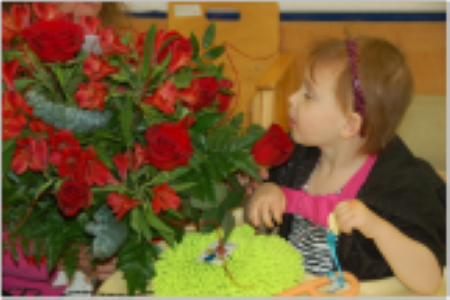Comprehension
As children begin to read on their own, parents and teachers often look for ways to determine whether they understand what they have read. There are many ways to do this. For example, you might ask them to point to specific characters or objects in picture books and to talk about the stories they are reading. You can also ask questions that let you know whether a child understands what he or she has read (e.g., How many brothers and sisters does Peter Rabbit have?) or to stimulate his or her thinking (e.g.,What would happen if the Cat in the Hat came to your house?). Children can also be asked to put story sequence cards in order, act out or draw a picture of a story, complete a variety of writing tasks (e.g., multiple choice questions, fill-in the blank cloze procedures, story mapping, book reports). There are many ways for children to demonstrate understanding of a story or topic.
Tell me and I'll forget. Show me, and I may remember. Involve me, and I'll understand. (Unknown)

Just like children with normal vision and hearing, children with combined vision and hearing loss can express their understanding of a story using various forms of communication that are understood by them (e.g. objects, tactile symbols, photos, line drawings, sign language, touch, eye gaze). This involves carefully designing and adapting literacy materials, including communication symbols, so that children can be actively engaged in before reading, during reading, and after reading activities to show us what they know and understand. The task of providing children with combined vision and hearing loss opportunities to engage with a variety of literacy materials in meaningful ways offers an increased understanding of our world and a means to learn new information.
Related Skills
Attention and Response
Attention/response to literacy partner; attention/response to literacy materials; increased duration of active engagement with literacy activities and/or literacy partner
Interaction and Communication
Use of multiple forms of communication to build comprehension skills; interacting with literacy partners focusing on literacy materials using various forms of communication; partial/full participation in literacy activities; repeated experiences with the same literacy materials/books; social interactions related to literacy activities (e.g., conversations regarding preferred stories)
Sensory
Use of auditory, visual, and tactile skills to gather information related to literacy materials
Motor
Eye gaze; eye/hand coordination; holding a book; opening/closing a book; turning pages of a book; pantomime/acting out story events; gestures; signs
Visual and/or Tactile Discrimination
Discriminating between different communication symbols (objects, tactile, photos, etc.) in order to answer comprehension questions
Cognitive
Use of objects, tactile symbols, photos, line drawings, etc. as communication symbols and to answer various types of comprehension questions; increased vocabulary through use of communication symbols; enhanced listening comprehension; expect use of varied vocabulary / concepts to answer comprehension questions (e.g., verbs, nouns, adjectives)
Video Clips
Tip Sheets
Page fluffers are simple adaptations that create a space between pages to allow those with limited fine motor skills to get their fingers between the pages.
Page turners are an adaptation that attaches an item to a page that extends beyond the page so that the student can grasp it and use it to the turn the page.
Tip sheet providing ideas for making books that reflect a child's sensory interests.
More Fun Books for Shared Reading
Tip sheet providing more ideas for making more fun books that reflect a child's sensory interests
Creating Interactive Sensory Books Using Objects
Tip sheet providing ideas for making books using actual objects that reflect a child's sensory interests
Tip sheet providing ideas for making books that are reflective for children who have a preference for items that are reflective.
Tip sheet providing ideas for making object-based books for students who need concrete symbols.
Story Boxes: A Hands-on Literacy Experience
Tip sheet providing information on how to develop and use story boxes.
Using Story Boxes with Older Children
Tip sheet providing information on how to develop and use story boxes with older children.
Articles
The Path to Symbolism (produced by NCDB)
This publication describes the importance of early communication experiences for the development of symbolic communication in children who are deaf-blind.
Colby's Growth to Language and Literacy: The Achievements of a Child who is Congenitally Deafblind
This article describes experiential-based literacy as one instructional approach to develop language and literacy skills
Using Read-alouds of Grade-Level Biographies and Systematic Prompting to Promote Comprehension for Students with Moderate and Severe Developmental Disabilities
Describes use of least intrusive prompts and a visual support highlighting rules for answering Wh questions. Emphasis on answering comprehension questions for biographies modified from grade-level content.
Additional Resources
Tangible Symbol Systems: Making the Right to Communicate a Reality for Individuals with Severe Disabilities
This website provides an overview of tangible symbols and provides a protocol for conducting a basic symbol assessment; relevant forms are included.
Symbol Assessment
This is a 4-page explanation of how to conduct a Symbol Assessment.
Start-to-Finish Literacy Starters
Curriculum-tied literacy materials for students with low-incidence disabilities.
Module 2: Overview of Augmentative and Alternative Communication (AAC)
This module provides an overview of AAC and tips for teaching students how to use it.
Module 9: Setting Up and Using Word Walls
This module describes how to set up a word wall and use it to teach students to read and spell words.
Module 10: Teaching Guided Reading Using the Anchor-Read Apply Approach
This module introduces a specific instructional approach that can be used during guided reading to teach comprehension. It describes the importance of background knowledge and how to help students connect known information to new information. This approach will have the greatest benefit for children who have emerged in their understanding of print, are engaged in book sharing, and are beginning to communicate in symbolic ways.
